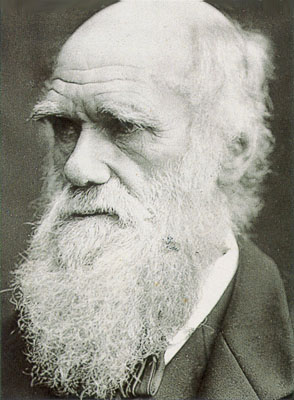
In class we have been discussing evolution lately. Specifically, we have discussed Darwin's mechanism for evolution or natural selection. Basically we can sum up natural selection in five points; nature produces more offspring than can survive, the environment is hostile, there is variation among offspring, some traits provide organisms with an advantage, and each generation has more offspring with the beneficial traits. In order for natural selection to work, the organism with the most beneficial trait has to reproduce and pass that trait on to it's offspring. Imagining that there are many ways in which an organism can do this, I think you will be surprised to consider the one highlighted in the article 'A Toad-Eat-Toad World,' and other Tales of Animal Cannibals by Natalie Angier. Yes, you read the title right. How about ensuring your right to mate by consuming (literally) the competition.
Angier tells the tale of cannibalism in several different species, focusing initially on the cane toad. Now you may be asking yourself, "how can this benefit the toad in terms of natural selection?" Three possible "motives" for the cannibalism are described as follows:
- Tadpoles feasting on the eggs will speed up their own maturation. Eggs are packed with nutrients, so think of it like a high energy drink.
- If the eggs are allowed to hatch and develop they will just be producing future rivals for food, shelter, and mates. By sitting down to dinner with a relative (evolutionarily speaking), the tadpoles are eliminating the competition before it exists. Truthfully, even of the eggs came from the tadpoles mother, who knows what male actually fertilized them. The fact that their mother has little discretion in choosing her mates means they are not dining
withon a full blooded relative. - Since the cane toads produce a toxin that most other animals can not eat, the eggs become a food source that is not available to other species.

So how does this relate to natural selection. Keep in mind that at it's foundation is the idea that organisms with beneficial traits must pass them onto the next generation. In order to do that, they must reach a reproductive age and produce offspring. Through cannibalism, they are essentially eating their way to their mates hearts.
The cane toads are an interesting species, and not just because of their family dinners. Cane toads were introduced into Australia in 1935 to control the cane beetle. As with many introduced species this has turned out to be a disaster. With very few native organisms that prey upon the cane toad they have quickly overpopulated and reduced the populations of other organisms with which they compete. Needless to say, they did little to stop the problem for which they were introduced. Especially since the cane toads can't jump high enough to eat the beetles living on the cane stalks. I suggest reading the Wikipedia article about their introduction to Australia for more information.
Watch the following video to see just how Australia is dealing with the problem of this introduced species:
I'll end with this... would you believe that there are people that actually lick these toads because of the hallucinogen effects from their toxins? The same toxins that are the reason they have very few predators in Australia. Toxins which can potentially stop your heart! Of course you would, people do dumb stuff all the time. Well toad lickers, there might be hope for you yet! Bart Currie from the Menzies School of Health thinks he might be able to find a treatment for the poison in the slatey grey and keelback snake venom. After all, these snakes can consume the cain toad. Even if he does, how desperate and low must you be to have to lick a toad to have fun. Hopefully, cannibalism will not be necessary to ensure these people don't pass their genes on to the next generation.



